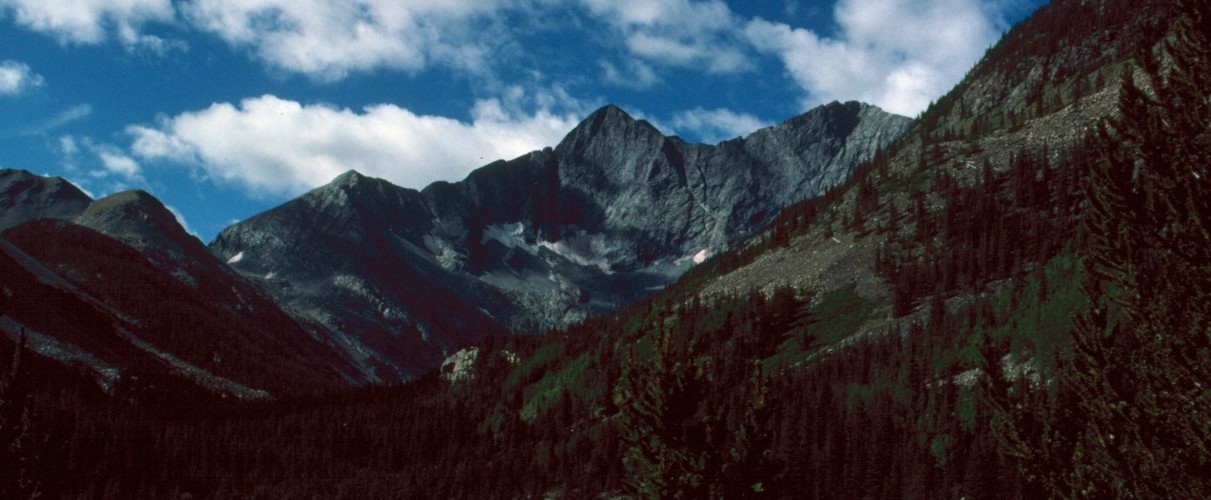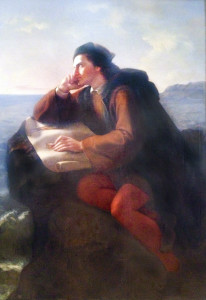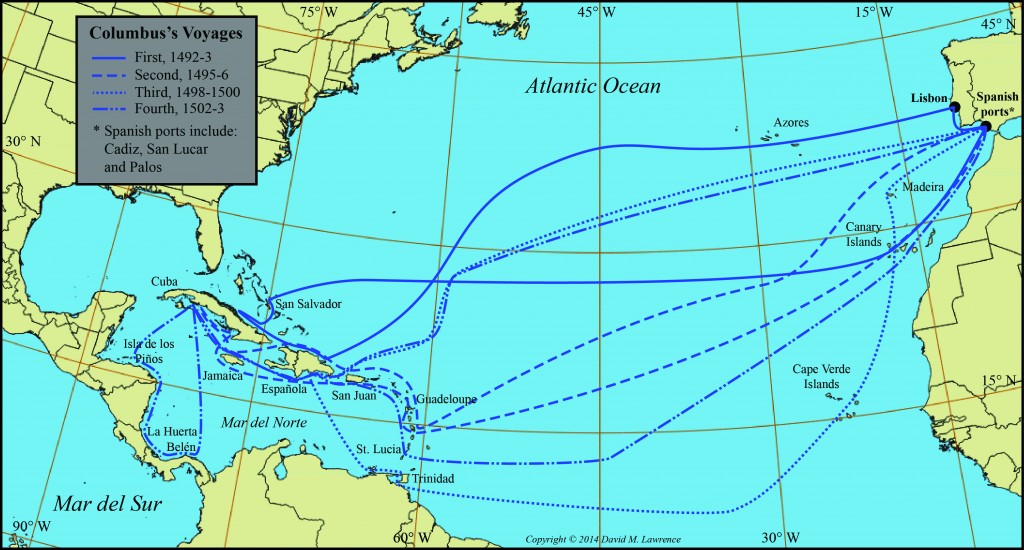Letter of Dr. Chanca on the Second Voyage of Columbus
MECHANICSVILLE, Va.—Enthusiastic over his “discovery” of the region Columbus identified as the Indies, Spain’s rulers backed him with a much larger expedition set to leave the fall following his return from his first voyage. On September 25, 1493, that expedition—with a complement of 17 ships—departed Cadiz for the westward voyage across the Atlantic.
Columbus was better equipped for a voyage of discovery this time around. Among the personnel onboard his ships were a number of individuals with some formal training in science. One of the key members of Columbus’s scientific contingent was a physician, Diego Álvarez Chanca, who described his experiences in a letter to the cabildo (town council) of Seville, his home town.
Chanca’s résumé was impressive: He had served as physician-in-ordinary to Ferdinand and Isabella, the King and Queen of Castile and Aragon—and, after the final conquest of the emirate of Granada in 1492, Spain (de Ybarra 1906). The monarchs appointed Chanca to accompany Columbus on his second voyage, in part because of the importance of the voyage, but also because of the many aristocratic men participating in the voyage (de Ybarra 1906).
The second voyage was undertake on a much grander scale than Columbus’s original voyage. Rather than departing Europe in three barely seaworthy ships like the first expedition, the second expedition was comprised of 17 ships—including galleons—about 1,200 men, and a vast amount of supplies (Chanca 1906). It was not a mere voyage of exploration. The goal this time was to establish a permanent colony in the New World.
The fleet left the port of Cadiz, Spain, on September 25, 1493. After a brief stop in the Canary Islands, the fleet set across the Atlantic and reached Dominica in the Lesser Antilles on November 3. The voyage was a productive one for Columbus. he sailed through much of the Lesser Antilles, giving many of the islands he cited the names by which we know them now. He spotted, though never landed on, the islands we now call the Virgin Islands. He landed on Puerto Rico, visited Española (Hispaniola)—including the ruins of the settlement he established on the first voyage, La Navidad, which was destroyed in an attack by the local Taino people, and explored the coastal parts of Cuba. He then returned to Española, from which he departed on his return trip to Spain.
The doctor proved his worth when he cured Columbus of a near-fatal attack of typhus in one instance and of malaria in another. He successfully treated many other members of the expedition for various diseases that might otherwise have killed them (de Ybarra 1906). After his return to Europe, he wrote a treatise on the treatment of pleurisy in 1506 and a critical commentary on the work of another physician in 1514 (de Ybarra 1906).
The great value of Chanca’s work to us is the scientifically trained-lens he trains onto the life of the New World. de Ybarra claims, not without reason, that Chanca’s letter on Columbus’s second voyage is the “the first written document about the flora, the fauna, the ethnology and the anthropology of America.”
Here is an example of Chanca’s powers of description—in a passage describing Española (Chanca 1906, 295-297):
The island being large, is divided into provinces; the part which we first touched at, is caused Hayti; the other province adjoining it they call Xamaná; and the next province is named Bohio, where we now are. These provinces are again subdivided, for they are of great extent. Those who have seen the length of its coast, state that it is two hundred leagues long, and I myself should judge it not to be less than a hundred and fifty leagues: as to its breadth, nothing is hitherto known; it is now forty days since a caravel left us with the view of circumnavigating it, and it is not yet returned. The country is very remarkable, and contains a vast number of huge rivers, and extensive chains of mountains, with broad open valleys, and the mountains are very high; it does not appear that the grass is ever cut throughout the year. I do not think they have any winter in this part, for at Christmas were found many bird-nests, some containing the young birds, and others containing eggs. No four-footed animal has ever been seen in this or any of the other islands, except some dogs of various colors, as in our own country, but in shape like large house-dogs; and also some little animals, in color and fur like a rabbit, and the size of a young rabbit, with long tails, and feet like those of a rat; these animals climb up the trees, and many who have tasted them, say they are very good to eat; there are not any wild beasts.
There are great numbers of small snakes, and some lizards, but not many; for the Indians consider them as great a luxury as we do pheasants; they are of the same size as ours, but different in shape. In a small adjacent island (close by a harbor called Monte Cristo, where we stayed several days), our men saw an enormous kind of lizard [DML: probably the American crocodile, Crocodylus acutus], which they said was as large round as a calf, with a tail as long as a lance, which they often went out to kill: but bulky as it was it got into the sea so that they could not catch it. There are, both in this and the other islands, and infinite number of birds like those in our own country and many others such as we had never seen. No kind of domestic fowl has been seen here, with the exception of some ducks in Zuruquia; these ducks were larger than those of Spain, though smaller than geese,—very pretty, with flat crests on their heads, most of them as white as snow, but some black.
Here, Chanca describes some of the vegetation of the islands (Chanca 1906, 310-311):
… The little time that we have spent on land, has been so much occupied in seeking for a fitting spot for the settlement, and in providing necessaries, that we have had little opportunity of becoming acquainted with the products of the soil, yet although the time has been so short, many marvellous things have been seen. We have met with trees bearing wool, of a sufficiently find quality (according to the opinion of those who are acquainted with the art) to be woven into good cloth; there are so many of these trees that we might load the caravels with wod, although it is troublesome to collect, for the trees are very thorny, but some means may be easily found of overcoming this difficulty. There are also cotton trees, perennials, as large as peach trees, which produce cotton in the greatest abundance. We found trees producing wax as good both in color and smell as bees-wax and equally useful for burning; indeed there is no great difference between them. There are vast numbers of trees which yield surprisingly fine turpentine; and there is also a great abundance of tragacanth, also very good. We found other trees which I think bear nutmegs, because the bark tastes and smells like that spice, but at present there is no fruit on them; I saw one root of ginger, which an Indian wore around his neck. There are also aloes; not like those which we have hitherto seen in Spain, but no doubt they are one of the species used by us doctors. A sort of cinnamon has also been found; but, to tell the truth, it is not so fine as that with which we are already acquainted in Spain. … We have also seen some lemon-colored myrobolans; at this season they are all lying under the trees, and have a bitter flavor arising from the rottenness occasioned by the moisture of the ground; but the taste of such parts as have remained sound, is that of the genuine myrobolan. there is also very good mastic. …
While his descriptions are scientifically vague in that there is little formal identification of species found, readers should remember that this was a letter to a friend, not a formal report. Furthermore, Chanca likely had not formal zoological or botanical training beyond that necessary for a physician, so one should not expect detailed lists of species. Nevertheless, the detail present gives me, at least, some idea of the landscape and its non-human residents.
Chanca also described the indigenous peoples he encountered, though not without some of the European bias (at the time) toward regarding non-Christians as savages. Here is an example (Chanca 1906, 288-289):
We remained eight days in this port … and went many times on shore, passing amongst the dwellings and villages which were on the coast; we found a vast number of human bones and skulls hung up about the houses, like vessels intended for holding various things. There were very few men to be seen here, and the women informed us that this was in consequence of ten canoes having gone to make an attack upon other islands. These islanders appeared to us to be more civilized than those we had hitherto seen; for although all the Indians had houses of straw, yet the houses of these people are constructed in a much superior fashion, are better stocked with provisions, and exhibit more evidence of industry, both on the part of the men and the women. They had a considerable amount of cotton, both spun and prepared for spinning, and many cotton sheets, so well woven as to be no way inferior to those of our country. We inquired of the women, who were prisoners on the island, what people these islanders were; they replied that they were Caribbees. As soon as they learned that we abhorred such people, on account of their evil practice of eating human flesh, they were much delighted; and after that, if they brought forward any woman or man of the Caribbees, they informed us (but secretly) that they were such, still evincing by their dread of their conquerors, that they belonged to a vanquished nation, though they knew them all to be in our power.
Chanca goes on to describe a lethal skirmish with the Caribbees after some of Columbus’s men tried to take them captive (Chanca 1906, 293):
When the Caribbees saw that all attempt at flight was useless, they most courageously took to their bows, both women and men; I say most courageously, because there were only four men and two women, and our people were twenty-five in number. Two of our men were wounded by the Indians, one with two arrow-shots in his breast, and another with one in his side, and if it had not happened that they carried shields and wooden bucklers, and that they soon got near them with the barge and upset their canoe, most of them might have been killed with their arrows. After their canoe was upset, they remained in the water swimming and occasionally wading (for there were more shadows in that spot), still using their bows as much as they could, so that our men had enough to do to take them; and after all there was one of them who they were unable to secure till he had received a mortal would with a lance, and whom thus wounded they took to the ships. The difference between these Caribbees and the other Indians, with respect to dress, consists in their wearing their hair very long, while the latter have it clipt and paint their heads with crosses and a hundred thousand different devices, each according to his fancy; which they do with sharpened reeds. All of them, both the Caribbees and the others, are beardless, so that it is a rare thing to find a man with a beard: the Caribbees and whom we took had their eyes and eyebrows stained, which I imagine they do from ostentation and to give them a more frightful appearance. …
While Columbus had moments of skilled observation, in comparing the two narratives, I find Chanca much more reliable and insightful—a better witness to the cultural and physical geography of the Caribbean at the dawn of the European conquest. Given his business was medicine, his observations were less skewed toward the quick acquisition of wealth than those of Columbus were. (Chanca was not immune from referring to rumors of gold to be found in the islands, but his references to it were much more matter of fact; there was little of the desperation evident in Columbus’s writing that the gold needed to be relocated from its Caribbean home to more hospitable environs in the hoards of Europe.)
If only Columbus had had someone with both the observational and literary skills of Chanca on his first voyage, we would know so much more about that time of first contact.
CORRECTION: The opening paragraph of the initial version of this post gave September 24, 1493, as the initial departure date of Columbus’s second voyage from Cadiz. The correct date was September 25, as was given later in the text (Chanca 1906, 283).
REFERENCES
Chanca, Diego Alvarez. 1906. “Letter of Dr. Chanca on the Second Voyage of Columbus.” Translated by R.H. Major. In The Northmen, Columbus and Cabot, 985-1503: The Voyages of the Northmen. Edited by Julius E. Olson and Edward Gaylord Bourne. Original Narratives of Early American History, 279-313. New York: Charles Scribner’s Sons.
de Ybarra, A. M. Fernandez. 1906. “A Forgotten Medical Worthy, Dr. Diego Alvarez Chanca, of Seville, Spain, and His Letter Describing the Second Voyage of Christopher Columbus to America.” Medical Library and Historical Journal 4(3):246–263.
- Journal of the First Voyage of Columbus
- Aldo Leopold: Some Fundamentals of Conservation in the Southwest


